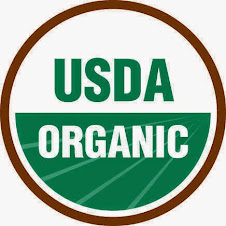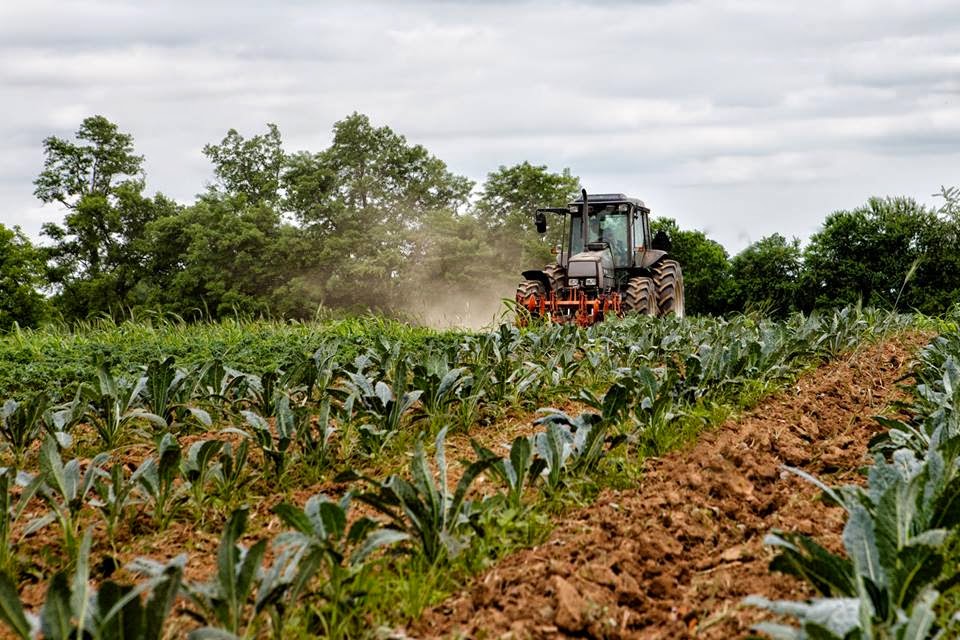It's Not Necessarily the End of the Season
This is the last
week of the summer share season, but it need not be the last of the wholesome
goodies you eat from Elmwood Stock Farm this year. Many of you are signed up
for the fall or winter share season, we will be downtown on Saturday mornings
at the Lexington Farmers Market all fall and winter, and hopefully you have
tucked a few items away in your freezer or pantry.
First, we
sincerely thank you for the support you have demonstrated by being a shareholder
of our organic farming operation. Your financial support gives our business a
solid foundation from which we secure the labor and supplies to produce and
provide the food you receive. Equally as important is the feedback we hear
about how much you enjoy the surprise each week and how it has helped you to
try new veggies or recipes. We know that everyone does not like everything in
the share, but the diversity and unique varieties we grow gives you the
opportunity to try a new recipe, or share an item with a friend. Hopefully this
newsletter has expanded your understanding of organic farming principles and
where that fits in the larger aspect of what you eat.
The Elmwood Stock
Farm – Fall CSA Season starts next week! Because of how the dates match up with
Holiday cooking for Thanksgiving and Christmas there will be six (6) pick-ups
instead of the historical five (5). These are every other week, the locations
and days of the week are different so check this out on our website. Though we
are close to full, it is not too late to sign up. The eggs and meats are also
available as well. Look for the Winter CSA Season information that will be
posted in December, we may be one of the few sources of local and organic foods
during the winter. The crops look good going into fall, though we sure could
use some of that extra rain from back in the summer. The Turkeys are sizing up
nicely and now is the time to secure the size you want this year. Email the
farm, or come see us at the market to get your name on the list. Being in the
grass-fed beef business, harvest season is upon us. Check out our beef or
beef/chicken bundles on the website so you can have a good supply in your
freezer.
We will be at our
usual location on the Short Street end of the pavilion at Cheapside Park on Saturday
mornings. The leadership of the Lexington Farmers Market is evaluating the
possibility of staying in the pavilion all winter this year, rather than being
tucked away in Victorian Square. We thank Victorian Square for the opportunity
they gave us for several years, to meet you each week all winter long, to
secure your meats, eggs, and veggies. We hope that with a little windbreak,
patio heaters, and ample close parking on Short Street, it will be more
convenient for you to stop down to visit with us all winter. Certainly we will
let you know when the decision has been finalized.
The CSA model is evolving in the marketplace,
primarily still around foods. The pamphlet from our friends at the Lexington
Pasta Company is a prime example. Their desire to build a loyal customer base
is with a quality product, and their mission of excellent customer service is
consistent with ours. You may also be hearing about businesses offering home
delivery of fruits and vegetables that may or may not be local or local and
organic. While these may be convenient, there is little connection between you
and the farm and should not be considered a new generation CSA.
In Your Share
Cabbage - organic
Garlic - organic
Leeks - organic
Onions - organic
Bell Peppers - organic
Potatoes - organic
Delicata Squash - organic
Yellow Squash and/or Zucchini
Green Beans - organic
Eggplant
Tomatoes - organic
Recipes to Enjoy
Roasted Delicata Squash with Apples,
adapted from a Martha Stewart recipe
2 delicata squashes, cut
crosswise into ½ inch slices, seeds removed (the skin on this squash is tender
and edible when cooked, so no need to peel)
4 medium or 6 small
apples (about 1 ½ pounds), halved
3 T extra virgin olive
oil
¼ C + 3 T light brown
sugar
6 oz bacon, slices cut
into ½ inch wide pieces
salt and freshly ground
black pepper
1 tsp fresh thyme leaves
(for garnish)
Preheat oven to
400°. Toss together squashes, apples,
oil, sugar, bacon, and ½ tsp salt; season with pepper. Spread on rimmed baking sheet, and roast
until golden on bottom, about 45-50 minutes.
Flip squashes and apples over, and roast until tender, about 5-10
minutes more. Sprinkle thyme over
mixture and serve immediately.
Roasted Eggplant and Potatoes,
a Hugh Fearnley-Whittingstall recipe
¼
C canola or olive oil
1
pound eggplant
1
pound potatoes, any type will do, unpeeled
sea
salt and freshly ground black pepper
2
garlic cloves, sliced
lemon
juice
Preheat the oven to 400°F. Put the oil in a large
nonstick roasting pan and heat in the oven for a good 10 minutes, until the oil
is sizzling hot.
Meanwhile, cut the eggplant and potatoes into
1-inch cubes into a bowl, and season well with salt and pepper.
Take the roasting pan from the oven and place on
a stable, heatproof surface. Add the eggplant and potato and turn to coat in
the oil, being careful not to splash yourself. Roast for about 30 minutes,
stirring halfway through.
Remove from the oven, stir in the garlic,
and roast for another 10 to 15 minutes, until the vegetables are
golden brown all over. Add a squeeze of lemon juice, a little more salt and
pepper if needed. Serve warm or at room temperature.
Optional garnish includes finely grated lemon
zest, hot smoked paprika, or chopped herbs.
Cabbage and Beef Quiche,
adapted from Cornelia Adam’s Quiches and Savory Tarts
10 inch pastry crust
(homemade or premade)
1 large onion
2 T oil
1 small cabbage
6 tsp dry white wine or
chicken or vegetable stock
salt and pepper
½ tsp ground caraway
seed
8 oz already cooked
ground beef
2 eggs
1 ¼ C sour cream
pinch of ground nutmeg
2 oz Harvarti cheese,
freshly grated
Prepare the pastry crust
and line a 10inch pan. Refrigerate
until ready to use.
Preheat the oven to
400°F. Peel and dice the onion. In a large skillet, heat the oil over medium
heat and saute the onion until translucent.
Trim, quarter, and core
the cabbage. Wash and slice into narrow
strips. Add cabbage to the skillet and
saute for 5 minutes. Add the wine or
stock, and season with salt and pepper to taste. Add caraway seed and saute for 5 more minutes. Remove from heat and let cool.
Mix the ground beef with
the cabbage mixture. In a bowl, whisk
the eggs with the sour cream and season generously with salt and pepper. Add nutmeg.
Distribute the
cabbage-beef mixture evenly in the crust.
Pour the egg mixture over the top and sprinkle with the cheese. Bake until filling is set and the crust is
golden brown, about 30 minutes.
Summer Squash
Tartines, adapted from
Deborah Madison’s Vegetable Literacy, serves 4.
1 tsp olive oil
1 or 2 summer
squash, very thinly sliced (about 8 oz)
½ - 1 tsp minced
fresh rosemary
grated zest of 1
lemon
sea salt and
freshly ground black pepper
4 long pieces of
baguette, sliced diagonally
olive oil and
garlic for the bread
½ C ricotta
cheese
Heat the oil in a
skillet over medium-high heat. Add the
squash, saute for 1minute or so to warm, then add a splash of water and
cover. Cook until squash is soft, about
3 minutes. Remove the lid, add rosemary
and zest, toss with the squash, then season with salt and pepper.
Lightly brush the
cut surface of the baguette pieces with olive oil, then toast until golden and
crisp. While the bread is hot, rub the
surface with the garlic. Spread ricotta
on the pieces, then lay on the squash pieces, overlapping a bit. Season with a bit more salt and pepper.





